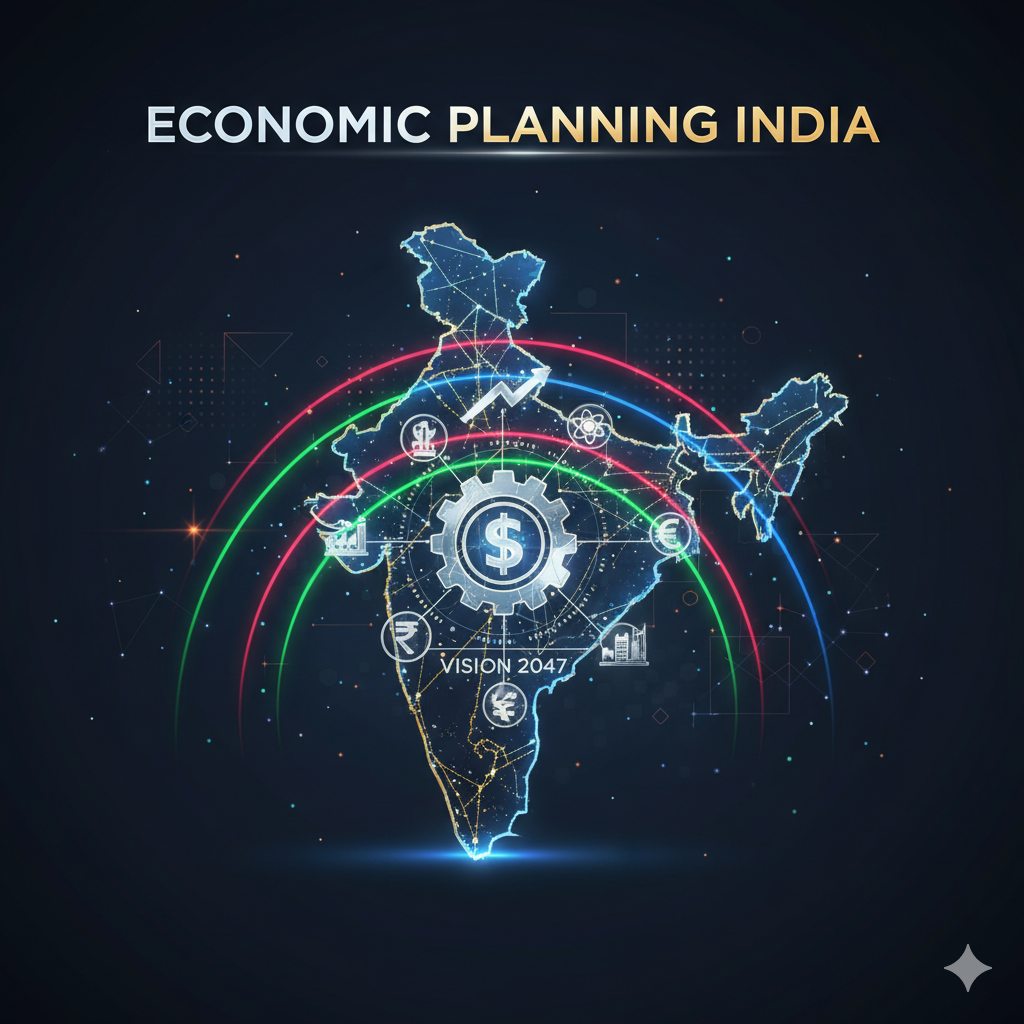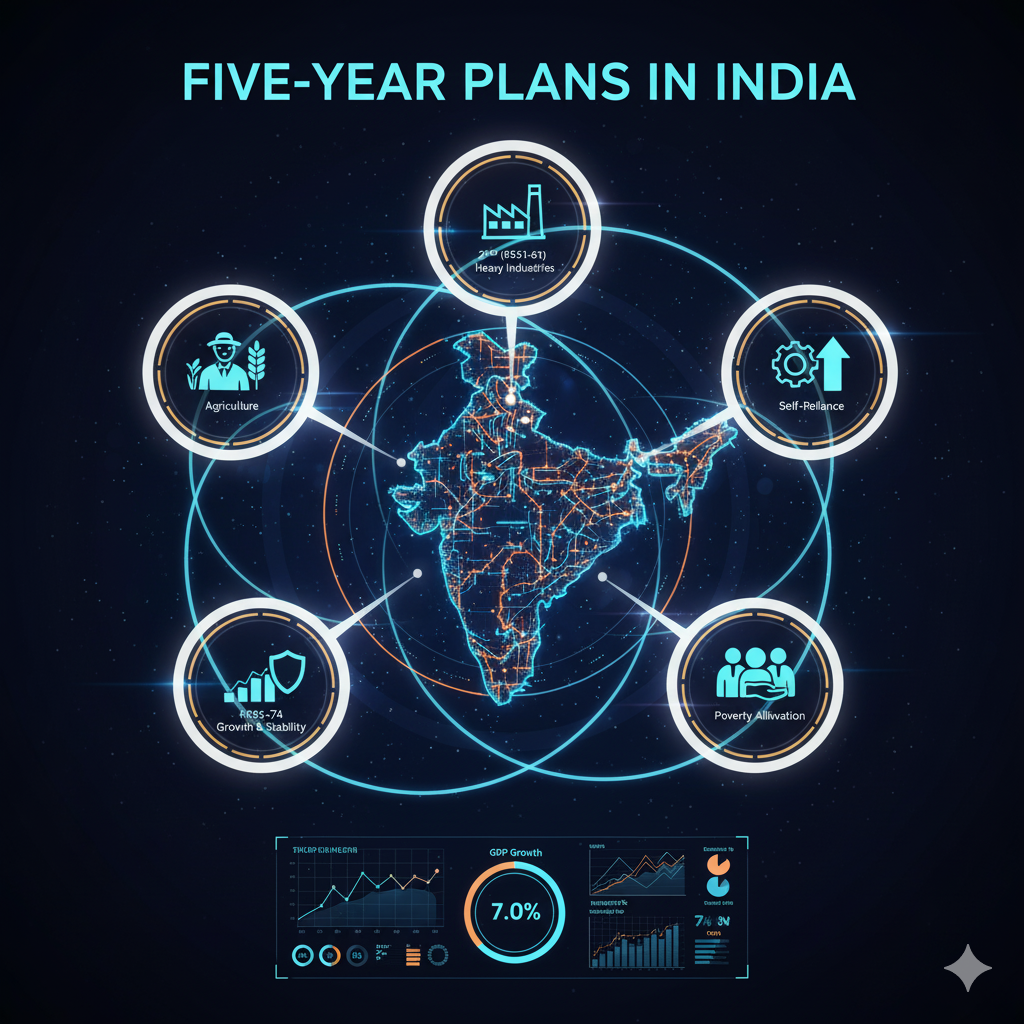Introduction
India’s economic ambition to become a global manufacturing hub received a major policy push with the introduction of the Production Linked Incentive (PLI) Scheme. Launched in 2020, the PLI scheme marks a structural shift in India’s industrial policy—moving away from input subsidies and tariff protection toward performance-based incentives linked directly to output.
The scheme aims to make Indian manufacturing globally competitive, reduce import dependence, create jobs, and promote exports across key sectors. It is seen as a major pillar of the government’s “Atmanirbhar Bharat” (self-reliant India) initiative.
This article explores how the PLI scheme is structured to support domestic manufacturing, assesses its sectoral impact, and evaluates its early outcomes, challenges, and potential in transforming India’s industrial landscape.
Understanding the PLI Scheme: Objectives and Design
What is the PLI Scheme?
The Production Linked Incentive (PLI) scheme provides financial incentives to companies based on incremental sales of goods manufactured in India, over a base year. The goal is to:
- Encourage domestic and foreign firms to set up or expand manufacturing units in India
- Create large-scale employment
- Promote import substitution
- Make Indian products more competitive globally
Core Objectives
- Enhance Domestic Manufacturing
- Attract Foreign Direct Investment (FDI)
- Reduce Import Dependency
- Boost Exports and Trade Balance
- Generate Employment
- Strengthen Global Supply Chains
How the Scheme Works
- Incentives range from 4% to 10% of incremental sales (varies by sector)
- The scheme covers a period of 5 years (sector-specific timelines may differ)
- Eligibility depends on minimum investment, incremental sales, and value addition
- PLI is offered to both Indian and foreign companies
Sectors Covered Under the PLI Scheme
The PLI scheme began with 3 sectors in 2020 and expanded to 14 sectors by 2021:
| Phase 1 (2020) | Phase 2 (2021) |
|---|---|
| 1. Mobile manufacturing and components | 5. Pharmaceuticals |
| 2. Active Pharmaceutical Ingredients (APIs) | 6. Food processing |
| 3. Medical devices | 7. Textiles and MMF |
| 8. Electronics/IT hardware | |
| 9. White goods (ACs and LEDs) | |
| 10. Auto and auto components | |
| 11. Advanced Chemistry Cell (battery storage) | |
| 12. Telecom and networking products | |
| 13. Specialty steel | |
| 14. Drones and drone components |
The total outlay of the scheme is over ₹1.97 lakh crore (~$24 billion) over 5 years.
How PLI Aims to Boost Manufacturing and Exports
1. Linking Incentives to Production Performance
Unlike earlier schemes that provided input subsidies or tax breaks, PLI directly rewards performance. Companies only receive incentives after achieving production targets, encouraging output, innovation, and efficiency.
2. Encouraging Scale and Global Competitiveness
By supporting large-scale production, the PLI scheme helps companies achieve economies of scale, reduce per-unit costs, and improve global price competitiveness.
3. Facilitating High-Value Manufacturing
PLI incentivizes manufacturing in cutting-edge sectors such as electronics, EV batteries, telecom equipment, and pharmaceuticals, promoting a shift from low-value to high-value manufacturing.
4. Attracting Global Manufacturers
PLI is aligned with global trends of supply chain diversification away from China. It provides a lucrative alternative base for global manufacturers looking for stability, lower costs, and market access.
5. Boosting Domestic Value Addition
In sectors like electronics and mobile phones, India traditionally imported a large portion of components. PLI encourages companies to localize their supply chains, raising domestic value addition.
Early Results and Achievements of the PLI Scheme
1. Mobile Manufacturing Boom
- India has emerged as the second-largest mobile phone manufacturer in the world.
- Global giants like Apple and Samsung have expanded operations under the PLI scheme.
- Apple’s suppliers like Foxconn, Pegatron, and Wistron have begun assembling iPhones in India.
2. Pharmaceutical and API Sector Revival
- India has reduced dependency on API imports from China.
- Over 30 APIs are now being produced domestically under the PLI scheme.
- The scheme is enabling bulk drug parks and fermentation-based production.
3. Electronics and IT Hardware
- Companies like Dell, HP, Lenovo, and Dixon have scaled up PC and tablet production.
- India is now seen as a competitive base for IT hardware exports.
4. White Goods (ACs and LEDs)
- Domestic production of AC compressors, LED drivers, and display units has increased.
- Companies like Voltas, Havells, and Panasonic are investing in new plants.
5. Auto and EV Components
- Companies like Tata Motors, Mahindra, Bosch, and Ola Electric have committed investments in EV battery packs, power electronics, and hydrogen fuel systems.
6. Investment and Employment
- As of 2023, PLI has generated:
- Investments exceeding ₹80,000 crore
- Production worth over ₹3.5 lakh crore
- Exports of ₹1.5 lakh crore
- Employment for over 3 lakh people (direct and indirect)
Challenges and Criticisms of the PLI Scheme
1. Slow Disbursement of Incentives
- Several companies faced delays in receiving incentive payments due to bureaucratic procedures and compliance issues.
- Transparency and regular tracking are needed for efficiency.
2. Overemphasis on Large Enterprises
- Small and medium enterprises (SMEs) often fail to meet eligibility criteria.
- The scheme may unintentionally exclude startups and innovators with high potential but low turnover.
3. Dependence on Imports for Components
- While final assembly has grown, many sectors still depend on imported components.
- Domestic value addition remains low in some industries like electronics and telecom.
4. Sectoral Imbalance
- Sectors like solar modules, food processing, and textiles have seen slower implementation.
- Certain sectors like semiconductors and medical devices require longer gestation periods and may need additional support.
5. Environmental and Labor Concerns
- Rapid industrial expansion raises questions on environmental sustainability and labor rights, especially in unorganized sectors.
Way Forward: Strengthening the PLI Ecosystem
1. Expanding to Sunrise Sectors
- The government may include new sectors such as:
- Green hydrogen
- Semiconductors and fab units
- Electrolysers
- Defense manufacturing
- Renewable energy equipment
2. Encouraging MSME Participation
- Create a separate PLI window for MSMEs, possibly with lower investment thresholds and easier documentation.
3. Strengthening Domestic Supply Chains
- Promote cluster-based development, research parks, and linkages between PLI firms and local vendors.
4. Ease of Doing Business
- Simplify the application, reporting, and incentive disbursement processes through online portals.
- Promote self-certification models and third-party audits.
5. Skill Development and Labor Reforms
- Align PLI with Skill India to train a workforce suited for high-tech manufacturing.
- Provide incentives for companies that follow sustainable and ethical labor practices.
Conclusion
The Production Linked Incentive (PLI) scheme is one of India’s most ambitious and strategic industrial policies in recent decades. It reflects a bold shift toward output-based, targeted, and sector-specific support for domestic manufacturing. The early results, especially in electronics, mobile phones, and APIs, are encouraging.
However, sustaining the momentum requires addressing structural challenges, ensuring inclusivity, and strengthening ancillary ecosystems. By focusing on innovation, sustainability, and supply chain resilience, the PLI scheme has the potential to redefine India’s position in the global manufacturing map.
With the right reforms and long-term vision, PLI can be the engine of India’s economic transformation, creating jobs, reducing imports, boosting exports, and turning India into the “factory of the world“.




